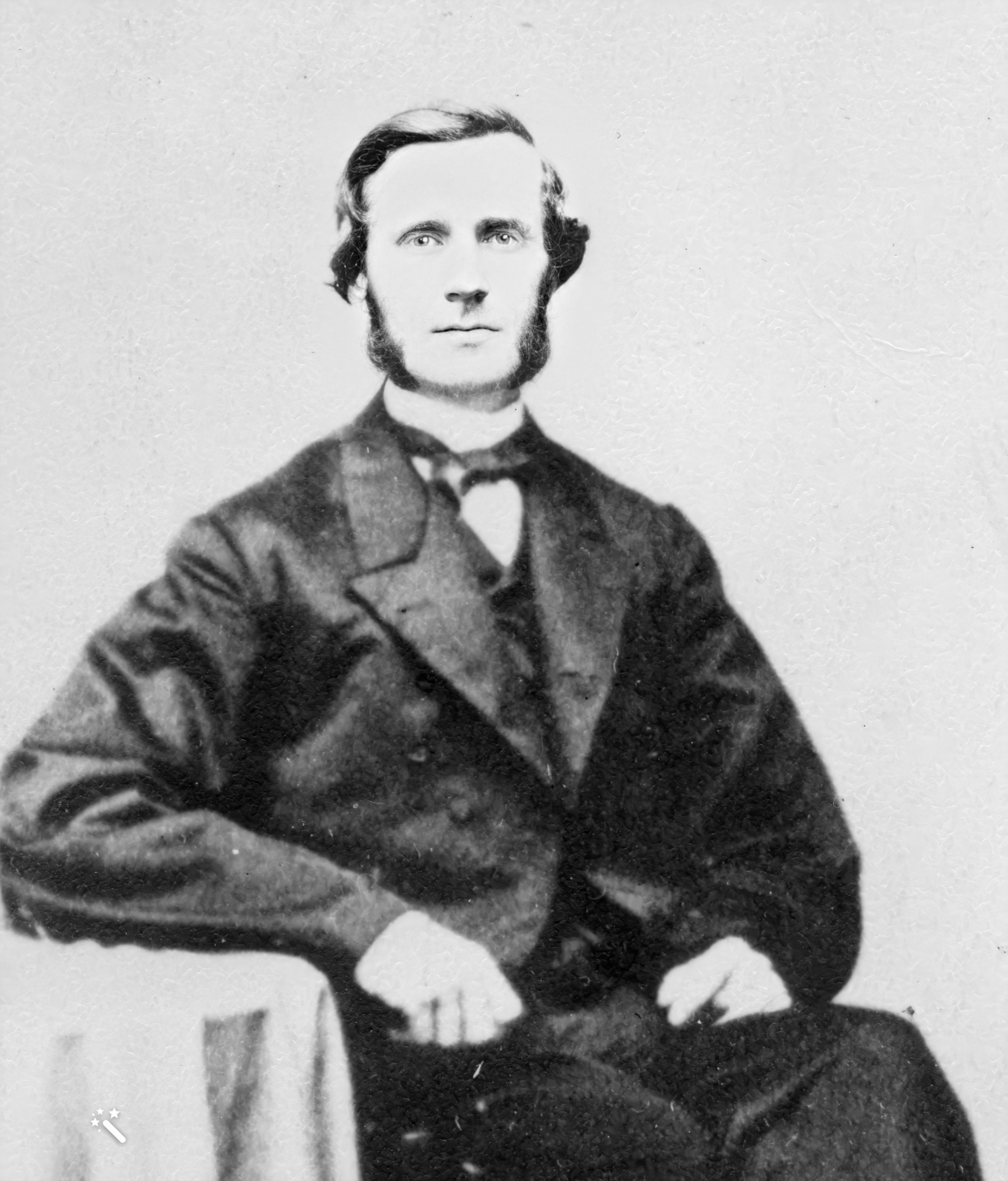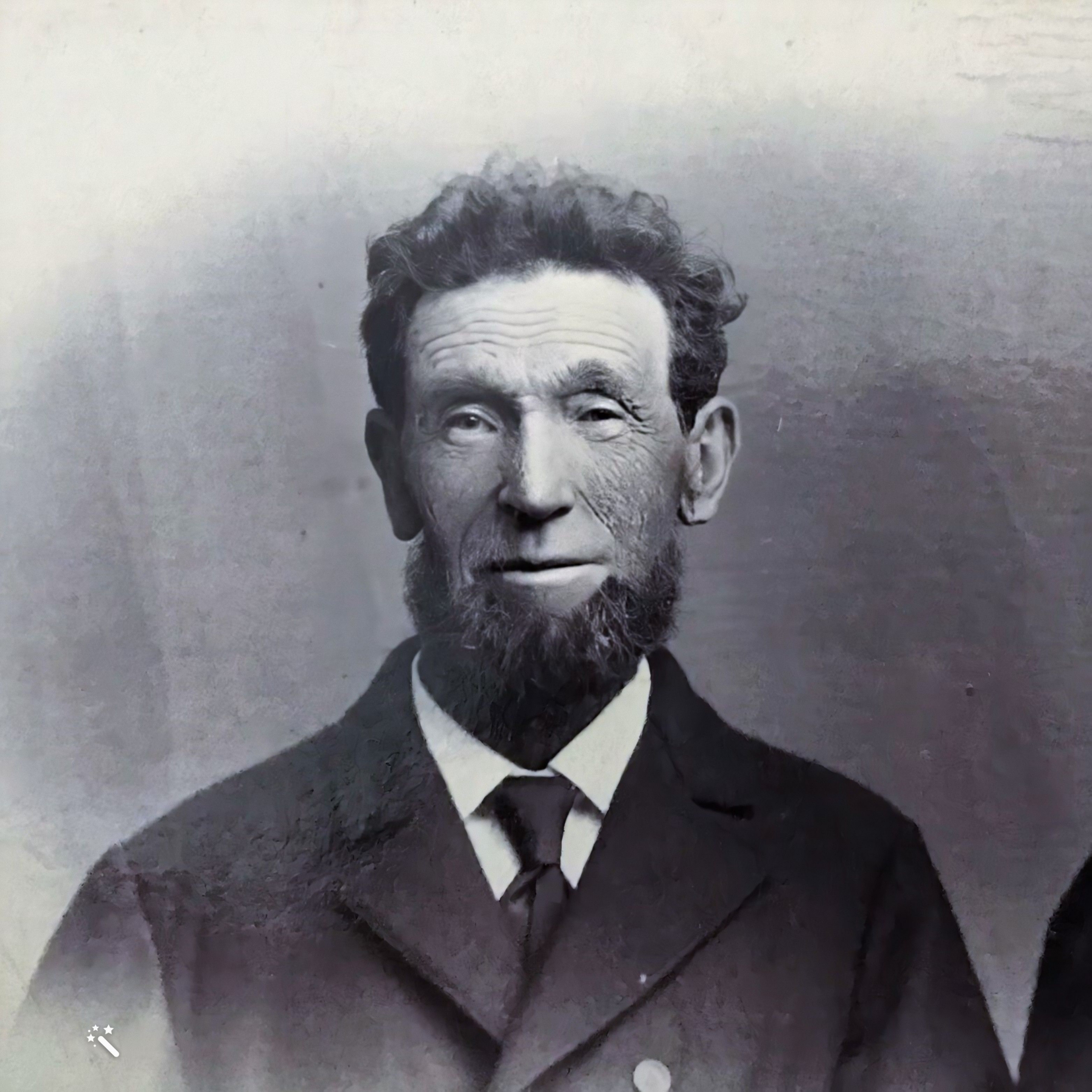Ancestors by Occupation II
In the previous post, I introduced occupational family trees and displayed two charts, one for my Dad’s tree and one for Mom’s. (See the post here.)
In this post, I will identify the most common occupational fields of my ancestors. To accomplish this, I had to review my tree again to determine the occupations of many ancestors – not always an easy task. Many past 3GG remain unknown – although in most cases, they were likely farmers.
Farming is the most common occupation of my ancestors. However, which non-farming occupations are the most common? Several fields stand out:
- Medical Practitioners
- Educators & Scientists
- Ministers & Clergy
- Public Officials
- Merchants & Bankers
- Builders & Carpenters & Shipwrights
- Cordwainers & Shoemakers
Here are the ancestors matching these categories:
Medical Practitioners
- Grandfather Lloyd Jonnes (1890-1952), M.D.
- Great-grandfather Howard Jones (1853-1945), M.D.
- 2GG Nelson E Jones (1821-1901), M.D.
- 5GG Leonard Anton Rist (1754-1837), health officer
- 6GG Franz Joseph Rist (1715-1759), surgeon
- 7GG Johann Michael Rist (1679-1759), surgeon
- 8GG Daniel Wills (1633-1698), physician and chemist
- 9GG Roger Parke (1648-1731), herbal doctor
This occupation is primarily associated with two ancestral lines: the Jones/Jonnes paternal line and an Alsatian line on my mother’s side, the Rist family of Dannemarie, Alsace, France. I grew up knowing about the medical tradition in the Jonnes line but only discovered the Rist practitioners in 2020. In addition, I have two doctors from colonial times in my tree. Dr. Daniel Wills was one of the leaders of the first William Penn-sponsored expedition to the New World in 1677. He was a trained physician and “chymist.” He was a great-grandfather of 5GG Hope Lippincott, the wife of Henry Jones (1734-1806). In Mom’s Whitney line, “Old Doctor” Roger Parke was a Quaker from Northumberland, England who is reported to have arrived in the New World in 1682, also on a William Penn-sponsored expedition. He had good relations with the local Lenni Lenape tribe and studied their native herbal concoctions and practices and became known in West Jersey for his medical remedies.

Dr. Nelson E. Jones as a young man, tintype, late 1840s or early 1850s (Source: Author’s collection)
Educators & Scientists
- Father Nelson Jonnes (1926-2011), schoolteacher, chemist, inventor
- Mother Beverly Jean Bonn (1932-2019), schoolteacher
- Great-grandmother Mary McMullin (1951), schoolteacher (for a couple years)
- 3GG Thomas J. Matthews (1788-1852), mathematics professor & school president
- 3GG Peter J. Aaberge (1808-1835), schoolteacher
- 5GG William Johnson (1733-1768), schoolteacher, science lecturer
Both parents were teachers, so I’m somewhat surprised I don’t have more in my ancestry. Nonetheless, two of Dad’s ancestors, Thomas Johnson Matthews and his maternal grandfather, William Johnson, were noteworthy intellectuals. Johnson drowned unfortunately at the age of only 35, but was known for giving a series of public lectures in the mid-1760s on the nature of electricity. This was at a time when the science of electricity was still in its infancy. Benjamin Franklin conducted his famous kite-flying experiment just a few years earlier in 1752. It makes you wonder if he and Franklin met or had a correspondence. Here’s an excerpt from Johnson’s newspaper advertisement for Providence, Rhode Island in 1764:
Ministers & Clergy
- 2GG Samuel H. McMullin (1831-1892), Presbyterian
- 4GG James Mead (1781-1856), Baptist
- 4GG Thomas Matthews (1749-1832), Quaker
- 4GG Sara Johnson (1760-1815), Quaker
- 5GG George Mason (1706-1780), Quaker
- 8GG Thomas Matthews (1633-1693), Quaker
- 8GG James Ashton (1652-1705), Baptist
- 8GG Thomas Hanford (1621-1693), Congregationalist
- 9GG Obadiah Holmes (1610-1682), Baptist
Other than Rev. James Mead of Delaware County, New York, my clerical ancestors are all on my Dad’s side. That’s pretty hilarious considering his irreligiosity. His McMullin and Matthews lines are particularly rich with clergy and church elders. Sara Johnson and Thomas Hanford, for example, belong to the Matthews line.

Rev. Samuel Hildeburn McMullin, D.D. (1831-1892), enhanced by MyHeritage, circa late 1850s (Author’s collection)
Public Officials
- Great-grandfather Bernt O. Bonn (1856-1937), city clerk
- 2GG Fred A. King (1857-1920), county clerk, village recorder, federal land officer
- 3GG Charles C. Miller (1820-1885), city treasurer
- 3GG John Kennelly (1796-1836), township supervisor
- 5GG William McMullin, Esq. (1729-1797), justice of the peace
- 6GG Col. Joab Houghton (1725-1798), state legislator
- 9GG Ralph Houghton (1623-1705), town clerk, selectman
This category runs more strongly in Mom’s tree. Two of her recent ancestors both served as local public administrators. Bernt O. Bonn served as City Clerk of Montevideo, Chippewa, Minnesota for over 20 years. Fred A. King was elected County Clerk of Saginaw, Michigan for 3 two-year terms in the 1880s and was a prominent town official in Grand Rapids, Minnesota between 1891 and 1912, including stints as city treasurer and village recorder. Fred was also the only federal official in our tree, appointed in 1912 as a Land Officer in Cass Lake, Minnesota. In colonial times and throughout early American history, many citizens served in various public capacities on a part-time or temporary basis, including constables, justices-of-the-peace, and magistrates. I have not listed them because so many ancestors fit this category.
Merchants & Bankers
- Father Nelson Jonnes (1926-2011), salesman and entrepreneur
- Grandfather Bertram Bonn (1902-1964), banker
- Great grandfather David M. Vermilyea (1881-1950), banker
- Great grandmother Bertha Aaberge (1865-1936), millinery shop owner
- 2GG Fred A. King (1857-1920), real estate & banking
- 3GG Stephen W. King (1824-1865), lumber
- 3GG Anson Smith (1795-1891), grain
- 3GG Robert McMullin Jr. (1787-1862), lumber
- 4GG John Tabele (1767-1810), merchant
- 5GG Jacob Tabele (1739-1831), merchant
- 7GG Victor Baumann (1693-1760), merchant
- 8GG Matthews Beckwith (1601-1681), shipping
This field makes a lot of sense given the prevalence of business skills among the current generation, including my brother, one sister, one of my sons, and at least one nephew and niece. It obviously skipped me. I do remember picking business tycoon as my Career Day topic in 9th grade, though. Talk about not knowing yourself!
Builders, Carpenters, & Shipwrights
- 2GG Wesley Blalock (1825-1895), carpenter, chair-maker
- 3GG William Blalock (1788-1850), carpenter
- 2GG John K. Vermilyea (1851-1925), carpenter
- 3GG Charles C. Miller (1822-1885), carpenter, building contractor
- 3GG John Kennelly (1768-1828), chairmaker
- 4GG Jason Beckwith (1764-1821), shipwright
- 4GG Robert McMullin Sr. (1756-1828), shipwright
- 5GG William McMullin (1729-1797), shipwright
- 9GG George Chappell (1616-1682), carpenter
- 9GG Vincent Rongnion (1645-1713), carpenter
I have been somewhat surprised, I guess, but definitely intrigued that so many ancestors were involved in working with wood. Carpentry is a common trade, certainly, yet it seems like we have an overabundance of such men – and on both sides of my tree.
Most interesting though was discovering our shipbuilding history. My father always liked building models, and late in life, he spent considerable time building huge sailing ships from Italian model kits. I think it literally took him a year or two to complete each one.
Thus, it is curious that he had strong shipbuilding roots in his Beckwith and McMullin lines. The Beckwiths, for example, were well-known shipbuilders on the Niantic River in Connecticut for several generations. The McMullins were involved for two generations or more with the shipbuilding industry in Philadelphia. William McMullin’s residence at 19 Vernon St. and son Robert McMullin Sr.’s residence at 60 Swanson St. were both within walking distance of this wharf scene in 1800:

Building of Frigate USS Philadelphia, 1800, engraving by W. Birch & Sons (Source: fineartamerica.com)
Cordwainers & Shoemakers
- 2GG Peter P. Aaberge (1835-1909)
- 4GG Thomas Jones (1766-1849)
- 5GG Henry Jones Jr. (1734-1806)
- 6GG Henry Jones Sr. (1696-1749)
- 7GG John Jones (1670-1727)
- 5GG Antony Wührlin (1764-1835)
- 6GG Theobald Wührlin (1720-1774)
- 7GG Johann Theobald Wührlin (1688-1740)
- 8GG Thomas Prichard (1650-1698)
Cordwaining is the ancient craft of shoemaking. In England at least, cordwainers and cobblers were considered separate professions and formed separate guilds. The Worshipful Company of Cordwainers, which regulated the profession in London, began as early as 1272. Cordwainers designed and manufactured leather shoes, as opposed to cobblers who only repaired shoes and were forbidden to work with new leather. Cordwaining is a true fashion trade while cobbling is a repair skill.
I would never have guessed that shoemaking was such a big part of our heritage, so this field is the biggest surprise. Cordwaining was the trade practiced by several male Joneses in the 18th century and was quite possibly the craft practiced by our Welsh forebears. John Jones, our earliest known Jones ancestor, even married a girl whose father was also a cordwainer from Wales, Thomas Prichard.
But it’s not just the Joneses. The Wührlins were shoemakers in Hartmannswiller, Alsace, for at least 150 years. Also, Norwegian ancestor Petter Pettersen Aaberge was a shoemaker in addition to tending his farm in Sogndal.

Petter Pettersen Aaberge (1835-1909), circa 1866 (Source: Odd Dagfinn Lereim)
Up next: Missing occupations







